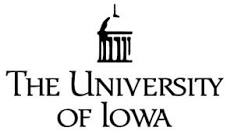Glucose Response of G-Pen (Glucagon Injection) in Pediatric T1D Patients
| Status: | Completed |
|---|---|
| Conditions: | Diabetes, Diabetes |
| Therapuetic Areas: | Endocrinology |
| Healthy: | No |
| Age Range: | 2 - 17 |
| Updated: | 12/13/2018 |
| Start Date: | March 27, 2017 |
| End Date: | September 27, 2017 |
A Phase 3 Study to Evaluate the Glucose Response of G-Pen (Glucagon Injection) in Pediatric Patients With Type 1 Diabetes
This is a sequential efficacy and safety study in pediatric patients with type 1 diabetes.
Subjects will be administered insulin to induce a low normal glycemic state and will then
receive an age-appropriate dose of G-Pen (glucagon injection) in a clinical research center
(CRC) or comparable setting.
Subjects will be administered insulin to induce a low normal glycemic state and will then
receive an age-appropriate dose of G-Pen (glucagon injection) in a clinical research center
(CRC) or comparable setting.
This is an open-label, Phase 3 sequential efficacy and safety study in pediatric patients
ages 2-17 with type 1 diabetes. Patients will complete the screening procedures up to 30 days
before dosing to determine eligibility before enrollment to the treatment phase.
The procedure to evaluate the efficacy of G-Pen (glucagon injection) consists of inducing a
low normal glycemic state by administration of insulin. Subjects ages 2-11 will then be given
a 0.5 mg dose of G-Pen, while subjects ages 12-17 will receive a 1 mg dose of G-Pen. Subjects
ages 12-17 will return for a second visit 1-4 weeks later and will receive a 0.5 mg dose of
G-Pen when in a low normal glycemic stare. Plasma glucose and glucagon levels will be
monitored for 90 and 180 minutes post-dosing, respectively, at all visits.
A follow-up phone call as a safety check will be conducted 3 - 14 days following
administration of the final dose.
ages 2-17 with type 1 diabetes. Patients will complete the screening procedures up to 30 days
before dosing to determine eligibility before enrollment to the treatment phase.
The procedure to evaluate the efficacy of G-Pen (glucagon injection) consists of inducing a
low normal glycemic state by administration of insulin. Subjects ages 2-11 will then be given
a 0.5 mg dose of G-Pen, while subjects ages 12-17 will receive a 1 mg dose of G-Pen. Subjects
ages 12-17 will return for a second visit 1-4 weeks later and will receive a 0.5 mg dose of
G-Pen when in a low normal glycemic stare. Plasma glucose and glucagon levels will be
monitored for 90 and 180 minutes post-dosing, respectively, at all visits.
A follow-up phone call as a safety check will be conducted 3 - 14 days following
administration of the final dose.
Inclusion Criteria:
- diagnosed with T1D for at least 6 months at Screening.
- current usage of daily insulin treatment.
Exclusion Criteria:
- pregnant or nursing
- renal insufficiency
- hepatic synthetic insufficiency
- aspartate or alanine aminotransferase > 3 times the upper limit of normal
- hematocrit less than or equal to 30%
- use of > 2.0 U/kg total insulin dose per day
- inadequate venous access
- current seizure disorder
- history of pheochromocytoma or disorder with increased risk of pheochromocytoma
- history of insulinoma
- history of glycogen storage disease.
- active use of alcohol or drugs of abuse
- administration of glucagon within 14 days of the first treatment visit
- participation in other studies involving an investigational drug or device within 30
days
We found this trial at
7
sites
Stanford University Stanford University, located between San Francisco and San Jose in the heart of...
Click here to add this to my saved trials
University of Florida The University of Florida (UF) is a major, public, comprehensive, land-grant, research...
Click here to add this to my saved trials
Indiana University INDIANA UNIVERSITY is a major multi-campus public research institution, grounded in the liberal...
Click here to add this to my saved trials
University of Iowa With just over 30,000 students, the University of Iowa is one of...
Click here to add this to my saved trials
Click here to add this to my saved trials
Click here to add this to my saved trials
Yale University Yale's roots can be traced back to the 1640s, when colonial clergymen led...
Click here to add this to my saved trials




